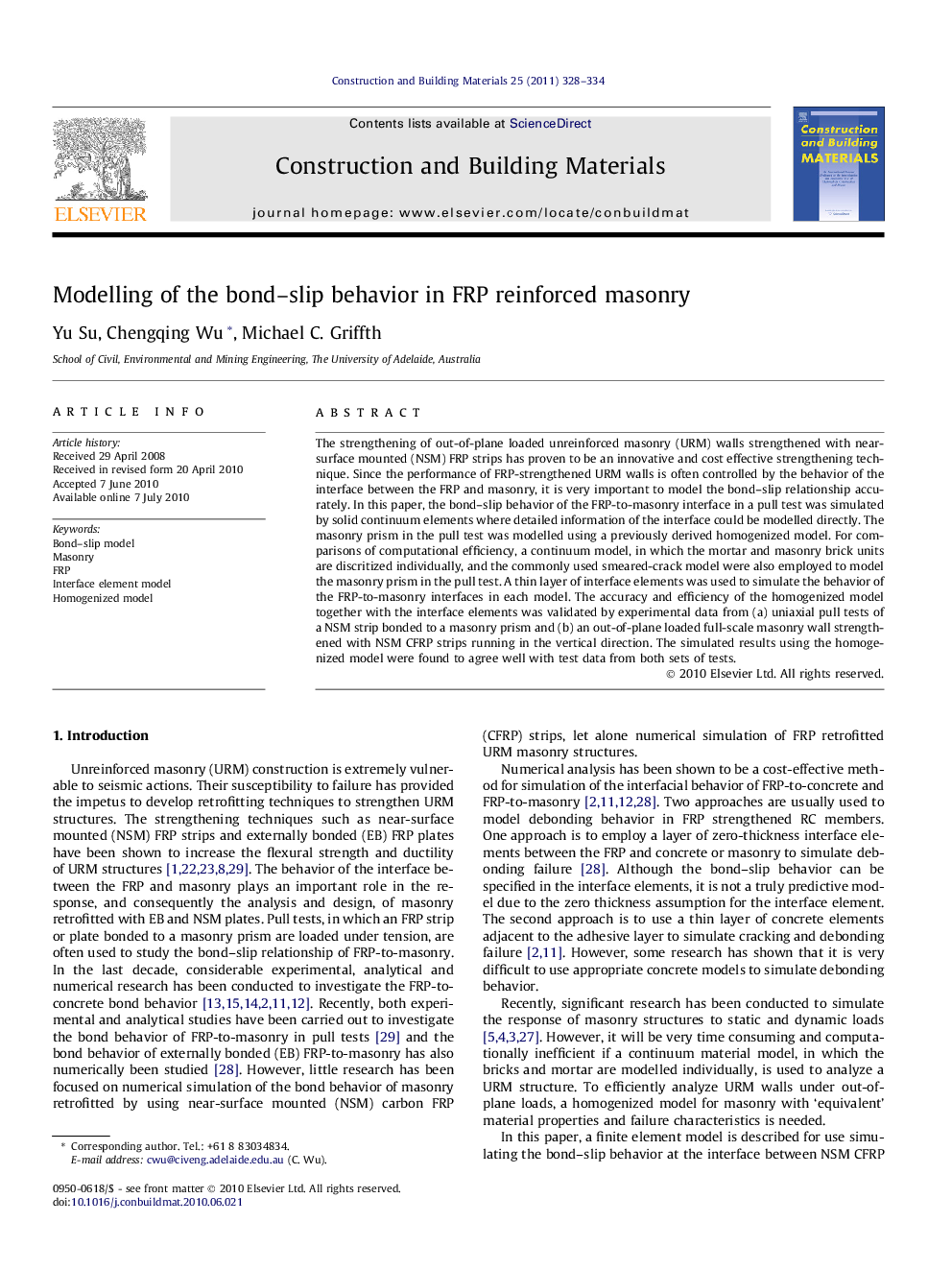| Article ID | Journal | Published Year | Pages | File Type |
|---|---|---|---|---|
| 260237 | Construction and Building Materials | 2011 | 7 Pages |
The strengthening of out-of-plane loaded unreinforced masonry (URM) walls strengthened with near-surface mounted (NSM) FRP strips has proven to be an innovative and cost effective strengthening technique. Since the performance of FRP-strengthened URM walls is often controlled by the behavior of the interface between the FRP and masonry, it is very important to model the bond–slip relationship accurately. In this paper, the bond–slip behavior of the FRP-to-masonry interface in a pull test was simulated by solid continuum elements where detailed information of the interface could be modelled directly. The masonry prism in the pull test was modelled using a previously derived homogenized model. For comparisons of computational efficiency, a continuum model, in which the mortar and masonry brick units are discritized individually, and the commonly used smeared-crack model were also employed to model the masonry prism in the pull test. A thin layer of interface elements was used to simulate the behavior of the FRP-to-masonry interfaces in each model. The accuracy and efficiency of the homogenized model together with the interface elements was validated by experimental data from (a) uniaxial pull tests of a NSM strip bonded to a masonry prism and (b) an out-of-plane loaded full-scale masonry wall strengthened with NSM CFRP strips running in the vertical direction. The simulated results using the homogenized model were found to agree well with test data from both sets of tests.
